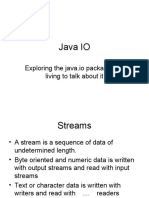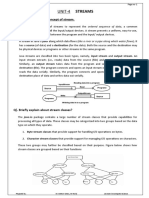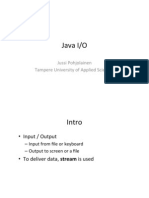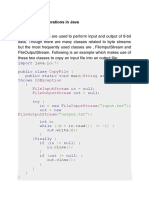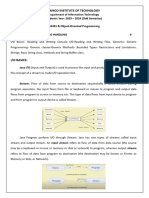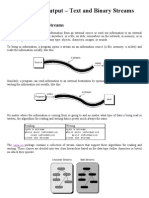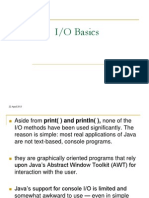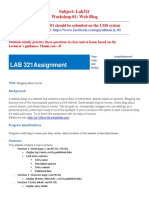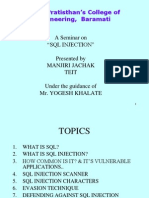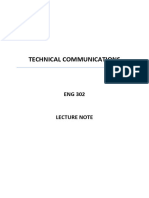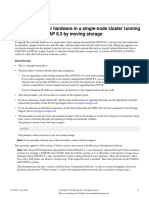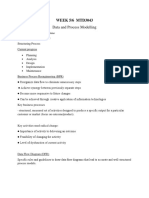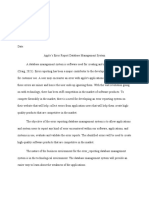0% found this document useful (0 votes)
14 views26 pagesInput Output
The document provides an overview of Java I/O, explaining the concept of streams for handling input and output operations. It distinguishes between byte streams for binary data and character streams for text data, detailing their respective classes and usage examples. Additionally, it emphasizes the importance of exception handling and the use of try-with-resources for automatic resource management.
Uploaded by
justchillliin2006Copyright
© © All Rights Reserved
We take content rights seriously. If you suspect this is your content, claim it here.
Available Formats
Download as PDF, TXT or read online on Scribd
0% found this document useful (0 votes)
14 views26 pagesInput Output
The document provides an overview of Java I/O, explaining the concept of streams for handling input and output operations. It distinguishes between byte streams for binary data and character streams for text data, detailing their respective classes and usage examples. Additionally, it emphasizes the importance of exception handling and the use of try-with-resources for automatic resource management.
Uploaded by
justchillliin2006Copyright
© © All Rights Reserved
We take content rights seriously. If you suspect this is your content, claim it here.
Available Formats
Download as PDF, TXT or read online on Scribd
/ 26











